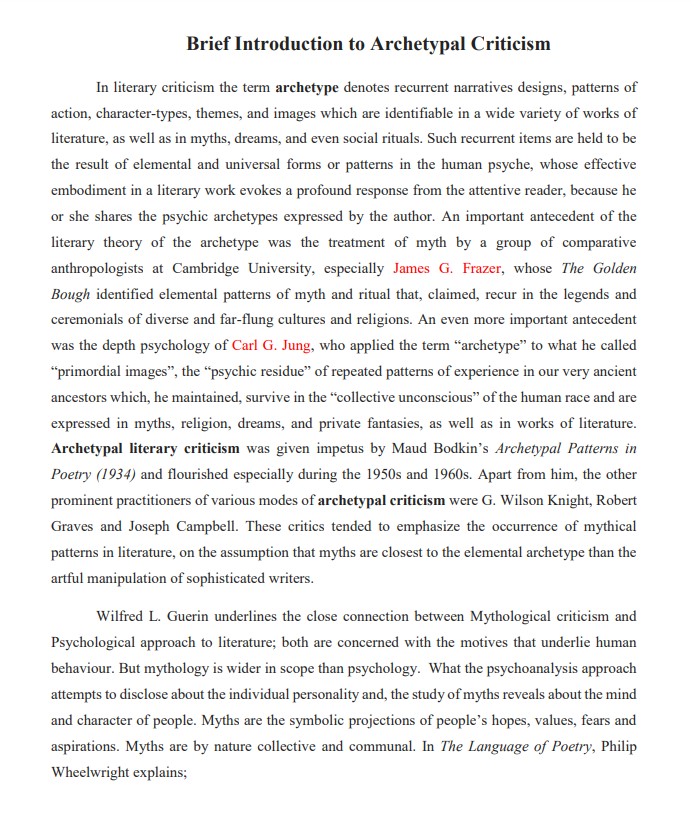Mythical Archetypal Approaches
Summary:
This Mythical Archetypal Approaches note introduces archetypal criticism, which identifies recurrent narratives, patterns, and themes in literature, myths, dreams, and rituals as the result of elemental and universal forms or patterns in the human psyche. Archetypal literary criticism emphasizes the occurrence of mythical patterns in literature, with the death/re-birth theme being the archetype of archetypes. Archetypes fall into two major categories: characters and situations/symbols, such as the hero, the outcast, the scapegoat, and the quest.
Excerpt:
Mythical Archetypal Approaches
Brief Introduction to Archetypal Criticism
In literary criticism, the term archetype denotes recurrent narrative designs, patterns of action, character types, themes, and images that are identifiable in a wide variety of works of literature, as well as myths, dreams, and even social rituals. Such recurrent items are held to be the result of elemental and universal forms or patterns in the human psyche, whose effective embodiment in a literary work evokes a profound response from the attentive reader because he or she shares the psychic archetypes expressed by the author. An important antecedent of the literary theory of the archetype was the treatment of myth by a group of comparative anthropologists at Cambridge University, especially James G. Frazer, whose The Golden Bough identified elemental patterns of myth and ritual that, claimed, recur in the legends and ceremonials of diverse and far-flung cultures and religions. An even more important antecedent was the depth psychology of Carl G. Jung, who applied the term “archetype” to what he called “primordial images”, the “psychic residue” of repeated patterns of experience in our very ancient ancestors which, he maintained, survive in the “collective unconscious” of the human race and are expressed in myths, religion, dreams, and private fantasies, as well as in works of literature.
Archetypal literary criticism was given impetus by Maud Bodkin’s Archetypal Patterns in Poetry (1934) and flourished especially during the 1950s and 1960s. Apart from him, the other prominent practitioners of various modes of archetypal criticism were G. Wilson Knight, Robert Graves, and Joseph Campbell.


Reviews